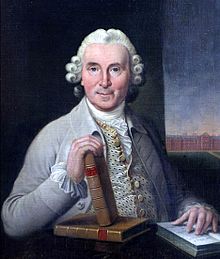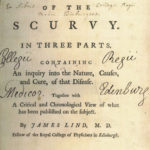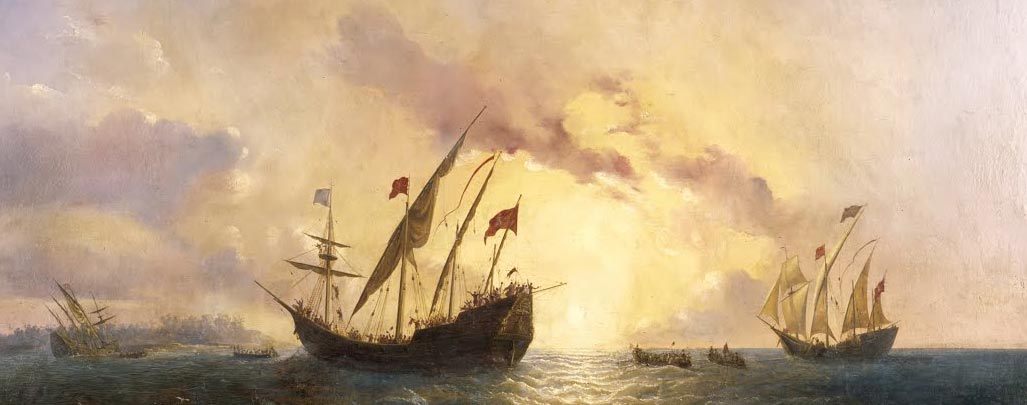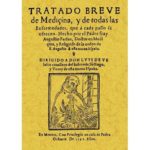Source:ABC
As is well known, the disease of scurvy, a fatal vitamin C deficiency, surely caused more deaths among seafarers than all the battles and storms, as its cause was unknown, which was none other than the impossibility of keeping onboard the ships the necessary fresh fruits and vegetables, especially when, during the “Age of Discovery”, the sailings became longer and longer. But perhaps it is necessary to review who really was the one who achieved his cure.
It is often said that history is written by the victors, and this is very true at times. Only with an impartial investigative effort, and with a critical spirit, it is possible to reconstruct, refine or complete versions that are usually biased.
 It is commonly accepted that the cure for scurvy is due to the Scottish physician James Lind (Edinburgh 4/10/1716 – Gosport 13/07/1794), who was appointed as a naval surgeon (a grade lower than the true doctor at the time) in HMS “Salisbury” in 1747, patrolling the English Channel.
It is commonly accepted that the cure for scurvy is due to the Scottish physician James Lind (Edinburgh 4/10/1716 – Gosport 13/07/1794), who was appointed as a naval surgeon (a grade lower than the true doctor at the time) in HMS “Salisbury” in 1747, patrolling the English Channel.
When he observed that, after weeks of sailing without entering port, the sailors fell ill with scurvy, he decided to do a test: he selected the twelve affected and in pairs, he gave them different treatments to find out which of them was effective. To a couple he gave vinegar, and successively, seawater, cider, a purgative of the time, nothing less than sulfuric acid very diluted in water, and oranges and lemons. Of course, the only ones who healed were the last, although we wonder what happened to some of the others, subjected to treatments that were more real poisons than medicines.
With the results of the first medical survey in history, as it is often claimed, he wrote “A treatise of the scurvy”, published in 1753, in which he referred to the disease and its treatment: but it does not seem that he was very right about the causes of it, as he attributed it to reasons such as an inadequate diet, (although for reasons other than those known), the rarefied air, and the confinement in ships. He also encountered the difficulty of preserving the fruits on board, even already converted into juice for better preservation and packaging on board. The only solution that occurred to him was to boil the containers with the juice “in a water bath”, with which the vitamin C disappeared or was greatly reduced.

For all this, he was not paid much attention, and for his part, the following year he left the Royal Navy and did his doctoral thesis on venereal diseases, which shows that not even he was very sure of those results. Currently, it is even doubted that he carried out the aforementioned experiment.
 The treatment was almost forgotten, with the Royal Navy using, at the request of the sailor Cook, other alleged solutions such as giving sailors cabbages, and fermented malt or barley.
The treatment was almost forgotten, with the Royal Navy using, at the request of the sailor Cook, other alleged solutions such as giving sailors cabbages, and fermented malt or barley.
But one of Lind’s disciples, Gilbert Blane, observed that by adding a little distilled alcohol (rum or gin) the juice preserved its properties, and after a hard battle, he got the Admiralty to approve as mandatory on all ships, the daily distribution of 21 cubic centimeters of orange or lemon juice in 1795. And as oranges and lemons were prohibitively expensive in the United Kingdom and its possessions, they were replaced by limes, raised in some overseas colonies, thus giving rise to the nickname of “Limeys” for English sailors.
So far, this is the official history, commonly known, with some references to much earlier analogous discoveries, among which any reference to Spanish contributions on the subject conspicuously absent.
The matter would have continued like this for us if it had not been for a curious article published in 1980 by a great world-famous epidemiologist, Don Julián de Zulueta y Cebrián, which appeared in the August issue of that year in the Revista General de Marina, pages 156 and following, titled “The Spanish contribution to the prevention and cure of scurvy at sea”.
The article refers to the fact that, in the course of his research on diseases of past times in navigations and colonization, he found in the Archive of the Indies of Seville the sensational news that the treatment with oranges and lemons was common at the beginning of the 17th century both in the Manila Galleon and in the Spanish fleets that operated there. Specifically, he mentions that in the fleet under the command of Don Francisco de Tejada from 1617-18, no less than 44 fresqueras (ventilated containers which help preserve food fresh) of “citrus lemon”, five barrels of said “citrus lemon” and an undetermined quantity (the figure is illegible in the document) of “lemon syrup”. And everything indicates that such a practice was normal, and for a long time, in the Spanish ships that sailed the South Sea.
The author demanded some research on the surprising discovery, which he could not make in person and which has not seemed to interest anyone, generally accepting the minted version as good.
Looking for some background to such important news, we find the fact that, indeed, the remedy was not at all unknown. And it had even deserved to appear in the medical literature.
Pedro García Farfán was born in Seville around 1532, dying in Mexico City in 1604. He studied Medicine at the universities of Salamanca and Seville, where he concluded his studies in 1552, spending five years later in New Spain (present-day Mexico) where he practiced his profession in Puebla, Oaxaca, and the capital city, obtaining a doctorate in Medicine at said university in 1567.
Two years later his wife died, which made him enter the Augustinian Order under the name of Fray Agustín Farfán. And it should be noted that it is the same order that Urdaneta embraced, a few years after his decisive “tornaviaje” (return-trip, from the Philippines to America) and that such order played a crucial role in the knowledge of the Spanish Pacific and the Far East, as evidenced by its Museum of Valladolid.
Well, thanks to a timely dispensation, Fray Agustín Farfán continued practicing Medicine, and in 1579 he published his “Brief Treatise on Anatomy and Surgery on some diseases that are most often found in New Spain” where he recommends the use of oranges and lemons for the treatment of scurvy. And the work was a great success, proof of his interest, as it was re-edited with some changes in title and text in 1592 and 1610, even after his death. Surely the Augustinian did not make the discovery himself, but he did gather news that came from Acapulco, the departure and arrival base of the Manila Galleon.
What requires some explanation is that such knowledge had been lost, or at least too diluted, so that Lind and Blane could get hold of the scoop more than two centuries later.
Although, of course, neither the Spaniards of the 16th century nor the British of the 18th century knew why citrus fruits cured scurvy, experience clearly supported the treatment.
The problem was another: how to preserve the fruit or its juice onboard during a long voyage without rotting under the conditions on board then?
As Zulueta’s article shows, the Spaniards tried by airless packaging of the juice, the so-called “sour”, or by heating it in a bain-marie, with which they made the aforementioned “syrup”, but and although such remedies prevented the juice from spoiling (case of the syrup) or they delayed it a bit (bottling the juice without air), it happened that either it lost the vitamin C (syrup) or it rotted in the long journeys (bottled without air), so the problem persisted.
But the truth is that it worked, delaying or alleviating the onset of the disease, which undoubtedly saved many lives or avoided painful consequences. If not for that reason, it is inexplicable that they would take so much trouble.
Undoubtedly these limitations explain why the remedy was discredited over time, adding to the difficulty and shortage in many European countries to obtain citrus, and why other solutions were tried. But it is very symptomatic that Lind himself did not know how to answer the problem that the Spanish had already raised two centuries earlier. And that only Blane, and we believe more by a lucky chance than by any reflection, since Louis Pasteur’s research on the effects of microorganisms in liquids is much later, find a practical solution.
Often in the History of Science and Technology the phenomenon of “Prisca Sapientia”, or “lost wisdom”, has been spoken of, of remarkable discoveries made in ancient times that, for one reason or another, were lost or put in the spotlight later on, but that modern Science and Techniques have claimed. And it should be noted that vitamin C and the mechanism and consequences of its deficiency have only been fully understood well into the 20th century.
But, and since there is talk of primacy in the discovery, however problematic and insecure it may be, it is good to establish it with all justice, since Lind, to whom it is attributed, did not take even one step more than the Spaniards of two centuries before. And it may well be suspected that he simply found some old Spanish treatise and appropriated it himself since it does not make much sense for him to abandon such a crucial investigation and dedicate himself to a very different one, in which he does not seem to achieve great results either.
Of course, we are not experts in such technical and complex issues that we have come across in the course of historical research, but we believe it is appropriate and necessary, in view of the data provided, to draw the attention of those who are, to clarify finally a matter that has remained too long in the shadows.
Share this article
On This Day
No Events
History of Spain
26 August 2020
27 January 2021
Communism: Now and Then
23 December 2022
28 July 2021








